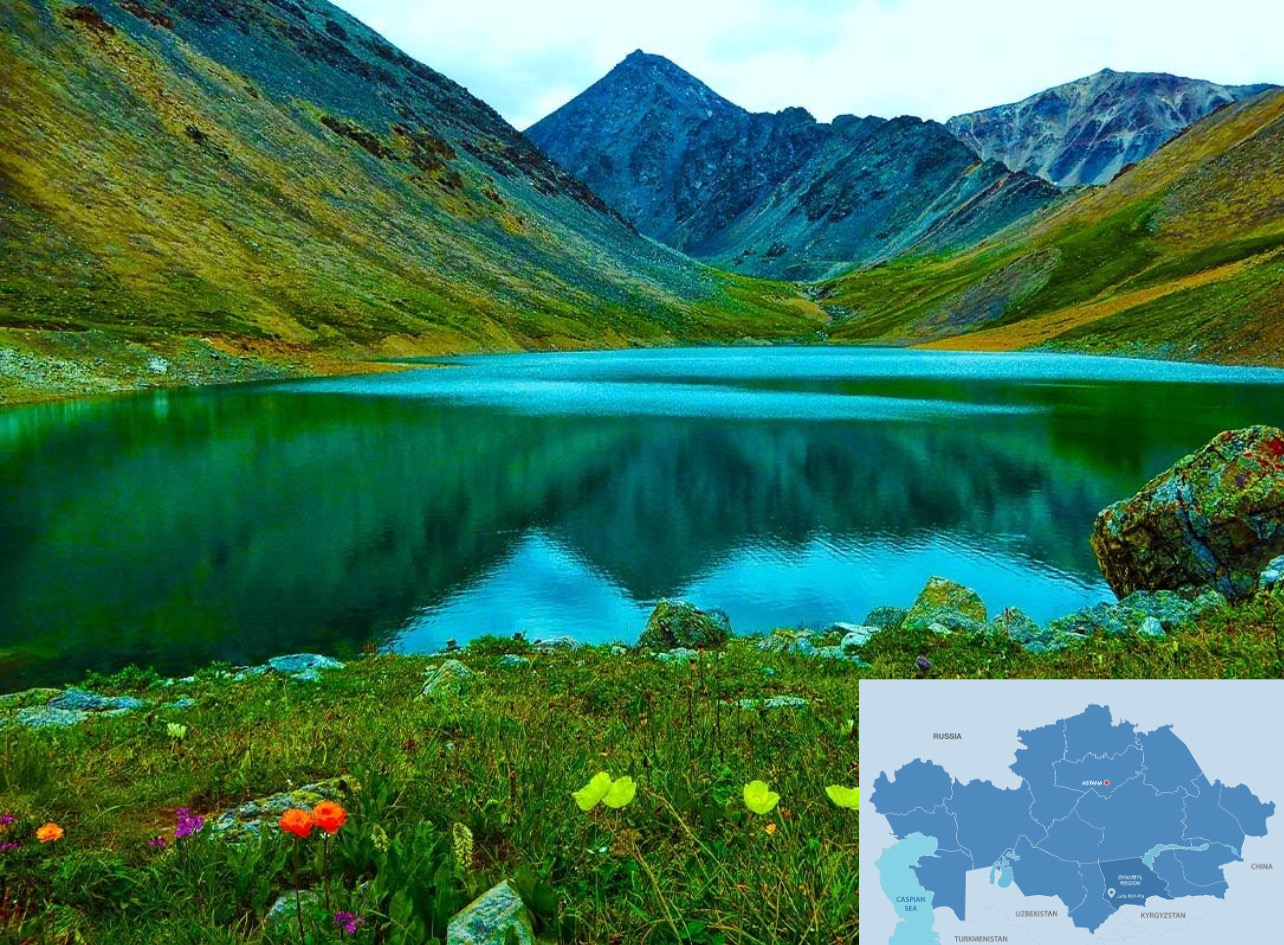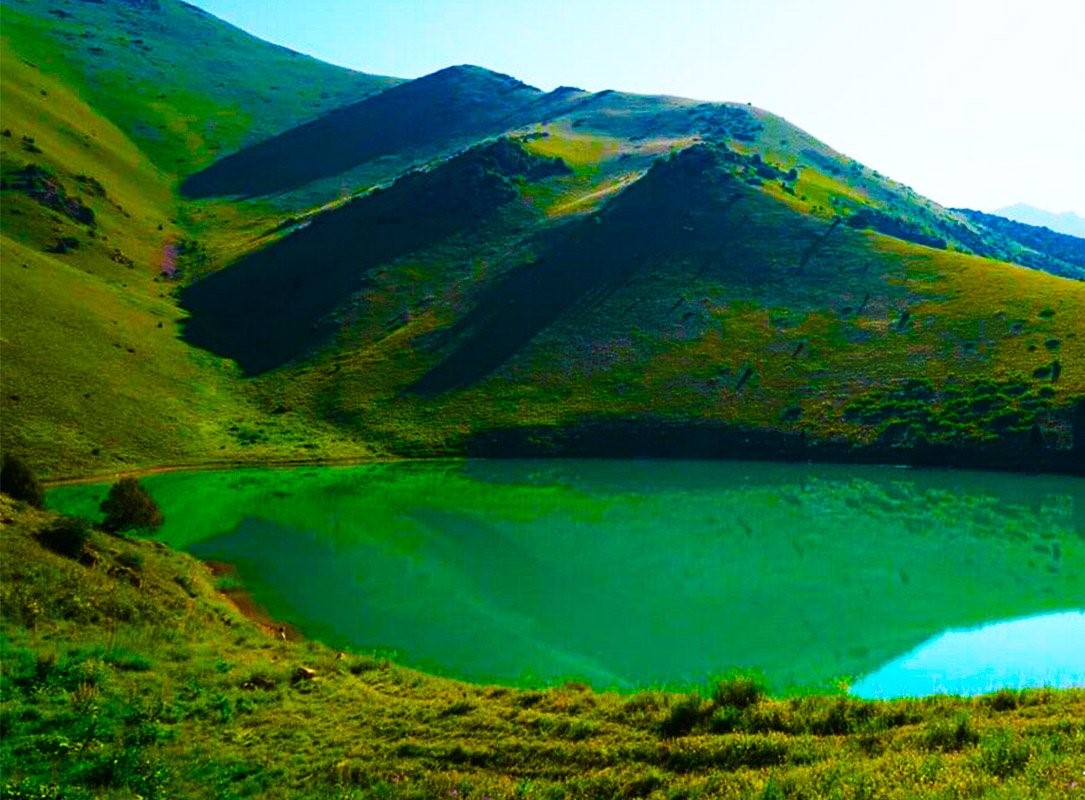ASTANA – The Zhambyl Region in the southern part of Kazakhstan is named after prominent Kazakh poet Zhambyl Zhabayev. The region is known for its masterpieces of ancient architecture, Muslim holy sites and breathtaking nature. It has mountain gorges, dunes, majestic mountains and broad steppes.

Lake Kok-Kol. Photo credit: wildticketasia.com. Click to see the map in full size. The map is designed by The Astana Times.
Only a few domestic and foreign tourists can boast about climbing the local mountains, experiencing the Merken district’s mineral water treatment, and visiting Lake Kok-Kol.
The lake is located at an altitude of 3,635 meters above sea level in the mountainous Karakistak Valley. The azure color lake is clear, despite not flowing anywhere and having no river tributaries. If debris gets on the surface after a while, it simply disappears.
During dry weather and on days of heavy rainfall, the water level remains unchanged. The lake does not dry up and does not overflow with water.
Several researchers tried to study the reservoir depths, but it was simply impossible to reach the bottom in some places.
Mystery of the lake
Legends, rumors, and superstitions surround the lake.

The water level of the lake remains unchaged during dry weather and on days of heavy rainfall. Photo credit: wildticketasia.com.
One of the legends says that Aidakhar (Dragon), the spirit of the waters, lives here. Some witnesses even claim they saw the spirit as a massive snake up to 15 meters long.
From time to time, the lake’s water seethes – locals believe this is when Aidakhar rises from the watery abyss.
On the perfectly flat surface of the lake, light ripples and then waves periodically appear. Sometimes they grow into large funnels that suck in garbage, animals, and sometimes even inexperienced tourists.
Some residents say the snake can make chilling sounds, like whistling, hissing, and even a roar.
Another intriguing fact is that swimming in the lake is not suggested because the surface appears lifeless. However, after unusual seething, the water in the lake becomes clean and healing and can be utilized medicinally.
The key to the mystery
In 1976, the expedition found answers to anomalous features of Lake Kok-Kol.
Scientists revealed that the lake is glacial, with rock moraine deposits. It features channels and caves at the bottom. These channels draw in water regularly, generating waves and funnels. Water and air occasionally mix, resulting in a variety of sounds. In the same way, the lake’s water level remains constant.
The scientists also confirm the lake’s healing properties. When water is drawn into bottom cavities filled with valuable minerals, it is saturated with them, becoming genuinely healing, and then is thrown to the surface.
“This is an amazing place, and it looks like the Loch Ness monster lives in it. It has a lot of anomalous zones where the photos taken on a mobile phone suddenly disappear,” said Marat Kirgizbayev, a member of the veterans’ council of the Zhambyl Region, in an interview with Kazinform news agency.
Kirgizbayev also mentioned that the lake is bottomless. It is assumed that it has a connection with Lake Baikal since the found flora in the depths is similar to the Baikal’s.
The Zhambyl Region can offer historical and cultural tourism, archaeological, ethnic, equestrian, ecological, medical and recreational, and agrotourism. Extreme types of tourism are also developed here, like jeep tours, hunting, and fishing. One can paraglide at the gorges of the Karatau Range, Kyrgyz, and Talas Alatau Ranges.

